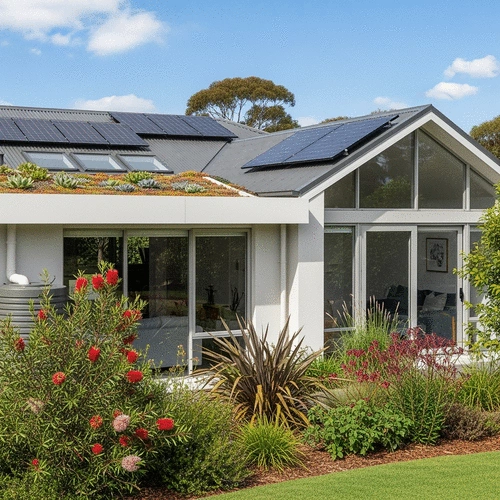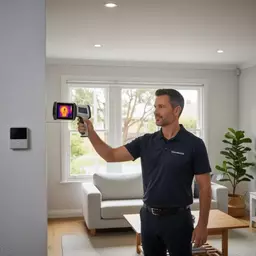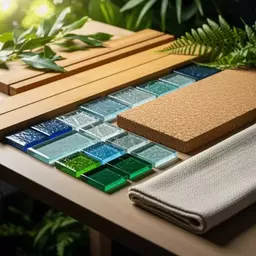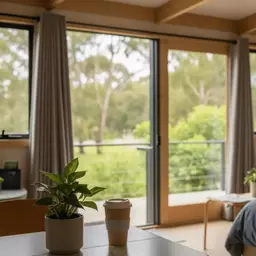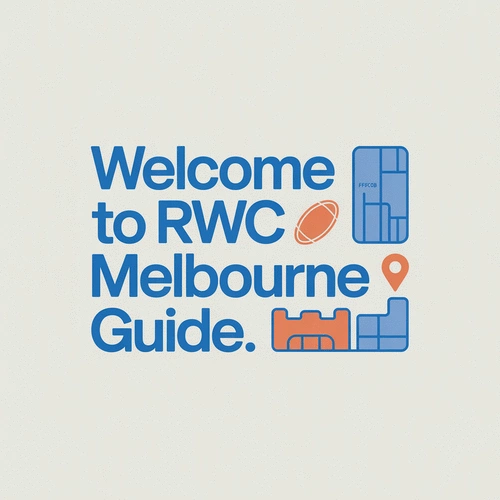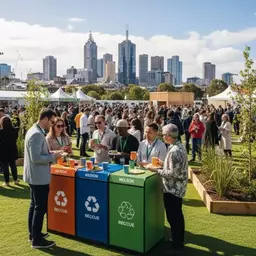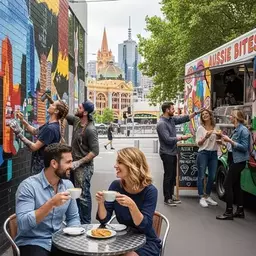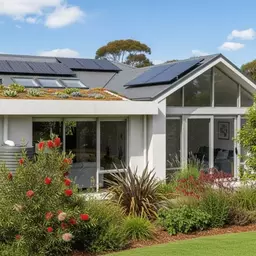Investing in sustainable practices not only benefits your home but also contributes to a healthier future for our planet. Are you ready to discover how to make your home more eco-friendly?
What You Will Learn
- Sustainable building practices enhance resource efficiency, reducing waste and conserving natural resources.
- Emphasizing energy efficiency in design can lead to significant reductions in heating and cooling costs.
- Water conservation systems, such as rainwater harvesting, play a vital role in sustainable home design.
- Understanding common myths about sustainable building can empower homeowners to make informed decisions.
- Investing in sustainable practices not only protects the environment but also increases property values over time.
- Building relationships with local sustainable builders can provide valuable insights and resources for eco-friendly projects.
Sustainable Building Practices in Melbourne: Key Principles and Homeowner Benefits
This visual highlights the core principles of sustainable building and the benefits for Melbourne homeowners, providing a clear understanding of the investment in eco-friendly practices.
What Constitutes Sustainable Building?
-
Resource Efficiency: Minimizing waste, conserving natural resources.
-
Energy Efficiency: Less consumption for heating, cooling, lighting.
-
Water Conservation: Reducing usage, promoting recycling.
-
Indoor Environmental Quality: Better air quality, enhanced comfort.
Why Sustainability is a Priority for Melbourne Homeowners
-
Lower Utility Bills: Significant savings on energy consumption.
-
Enhanced Comfort: Consistent indoor environment year-round.
-
Increased Property Value: Higher resale value for sustainable homes.
-
Positive Environmental Impact: Reduced carbon footprint for a healthier planet.
Understanding Sustainable Building Practices in RWC Melbourne
As the world becomes more environmentally conscious, sustainable building practices have gained traction, especially here in vibrant Melbourne. Sustainability isn't just a trend; it’s a commitment to our planet and future generations. Understanding what constitutes sustainable building is vital for homeowners looking to make eco-friendly choices.
Sustainable building involves using resources efficiently, minimizing waste, and enhancing the overall environmental performance of buildings. It incorporates elements like energy efficiency, water conservation, and the use of sustainable materials. Embracing these practices not only benefits the environment but can also lead to significant savings on energy bills! For more detailed guidance, the Victorian Government's Planning website offers comprehensive resources on environmentally sustainable development.
What Constitutes Sustainable Building?
Sustainable building practices can be defined through various key attributes. Here are some fundamental principles:
- Resource Efficiency: Utilizing materials and resources in a way that reduces waste and conserves natural resources.
- Energy Efficiency: Designing buildings to consume less energy for heating, cooling, and lighting.
- Water Conservation: Implementing systems that reduce water usage and promote recycling of water.
- Indoor Environmental Quality: Using materials and designs that improve air quality and enhance the comfort of occupants.
By understanding these principles, homeowners can make informed decisions about their building projects, transforming their homes into sustainable havens. The City of Melbourne also provides information on sustainable building design amendments (C376), which highlights local efforts to integrate these practices into urban planning.
The Importance of Sustainability for Homeowners in Melbourne
As a passionate advocate for Melbourne's culture and sustainability, I see firsthand how important it is for homeowners to embrace sustainable practices. Investing in sustainability not only protects our environment but also enhances property values and improves living conditions.
Here are some reasons why sustainability should be a priority for homeowners in Melbourne:
- Lower Utility Bills: Energy-efficient homes consume less energy, leading to significant savings over time.
- Enhanced Comfort: A well-insulated and designed home ensures a comfortable living environment year-round.
- Increased Property Value: Sustainable homes often have a higher resale value as buyers look for energy-efficient features.
- Positive Environmental Impact: Reducing your carbon footprint contributes to a healthier planet for future generations.
By prioritizing sustainability, Melbourne homeowners can contribute to a greener city while enjoying tangible benefits in their daily lives. So, are you ready to explore how to build your home sustainably?
Engage with Your Community!
As you embark on your sustainable building journey, consider this: How can you inspire others in your neighborhood to adopt eco-friendly practices? Whether it's hosting a workshop, sharing your experiences online, or simply discussing your projects with friends and family, your actions can create a ripple effect.
What steps will you take to engage your community in sustainability? Share your thoughts below!
Frequently Asked Questions About Sustainable Building
What are the core principles of sustainable building?
The core principles include resource efficiency (minimizing waste and conserving natural resources), energy efficiency (reducing consumption for heating, cooling, and lighting), water conservation (reducing usage and promoting recycling), and improving indoor environmental quality (better air quality and comfort).
How does sustainable building benefit homeowners in Melbourne?
Homeowners benefit from lower utility bills due to reduced energy and water consumption, enhanced comfort with consistent indoor temperatures, increased property value, and a positive environmental impact by reducing their carbon footprint.
Is sustainable building always more expensive?
While initial costs might be higher, sustainable building often leads to significant long-term savings on energy and water bills, which can offset the initial investment. Many sustainable materials are also designed to be durable.
Can sustainable building practices be applied in heritage areas?
Yes, it is possible to blend modern sustainability with heritage preservation through careful planning and the right approach, ensuring that new practices respect existing architectural and historical contexts.
Where can I find local sustainable builders and resources in Melbourne?
You can research local builders specializing in sustainable practices, attend workshops or seminars on sustainable building, and utilize online platforms for reviews and recommendations. Engaging with Community Engagement and Sustainability Initiatives in Melbourne can also provide valuable connections.
Taking Action Towards Sustainable Home Building
As we dive deeper into sustainable home building, it becomes essential to take proactive steps. At RWC Melbourne Guide, I believe that creating a sustainable home starts with a clear plan. To help you get started, I've put together a comprehensive checklist that covers all the bases for building eco-friendly homes in Melbourne!
Creating Your Sustainable Home Checklist
This checklist will guide you through the process of making your home more sustainable. Here are the key items to consider:
- Conduct an energy audit to assess your current energy usage.
- Choose sustainable building materials, like recycled or locally sourced products.
- Implement water conservation systems, such as rainwater harvesting.
- Incorporate passive solar design principles to maximize natural light.
- Install energy-efficient appliances and fixtures.
- Evaluate insulation options to improve energy conservation.
By following this checklist, you can ensure that your home not only meets your needs but also contributes positively to the environment. Have you ever felt overwhelmed by the thought of sustainable building? Don't worry! Taking it step by step can make the process manageable and even enjoyable.
Common Myths About Sustainable Building in Melbourne
Despite the growing interest in sustainable practices, several myths persist. Let’s debunk some of these misconceptions:
- Myth 1: Sustainable building is always more expensive. Truth: Although initial costs can be higher, long-term savings on energy bills can offset those expenses.
- Myth 2: Sustainable materials are less durable. Truth: Many sustainable materials are designed to be just as strong and sometimes even stronger than traditional options.
- Myth 3: You can’t build sustainably in heritage areas. Truth: With the right approach, it’s possible to blend modern sustainability with heritage preservation. More insights on this can be found in discussions and submissions regarding sustainable buildings from organizations like the Urban Development Institute of Australia.
Understanding these myths is crucial in making informed decisions about your home. It’s easy to see why some might hesitate to embrace sustainability, but as I often remind my readers, knowledge is power! Keep challenging these misconceptions, and you’ll find your path forward.
Encouragement for Homeowners to Embrace Sustainability
Now that we’ve tackled the basics of sustainable building, let's focus on why it's worth it for homeowners. Embracing sustainability is not just a trend; it's a crucial step toward preserving our beautiful Melbourne for future generations.
The Long-Term Benefits of Investing in Sustainable Practices
Investing in sustainable practices can have a profound impact, both for your household and the community. Here are some compelling reasons to make the switch:
- Cost Savings: Lower energy and water bills over time can significantly reduce your household expenses.
- Increased Property Value: Sustainable homes often attract higher resale values in today’s market.
- Environmental Impact: Reducing your carbon footprint contributes to a healthier planet.
Have you started to see the bigger picture? By making these investments, you're not only benefiting yourself but also contributing to the broader goal of sustainability in Melbourne.
Connecting with Local Sustainable Builders and Resources
Finding the right partners is key. I recommend reaching out to local builders who specialize in sustainable construction. They can provide invaluable insights and resources to help you on your journey. Here are some tips for connecting with them:
- Research local builders known for sustainable practices.
- Attend workshops or seminars on sustainable building.
- Utilize online platforms to find reviews and recommendations.
Building relationships with these professionals can make a world of difference in your sustainable building journey. Plus, it’s a great way to engage with your community!
Community Engagement and Sustainability Initiatives in Melbourne
Finally, I believe community engagement plays a vital role in promoting sustainable building practices. Melbourne boasts several initiatives and programs aimed at encouraging sustainable living:
- Participate in local sustainability forums or workshops.
- Join community clean-up days that focus on environmental preservation.
- Collaborate on neighborhood projects that promote green spaces.
By getting involved, you can not only enhance your own understanding of sustainability but also inspire others to join the movement. So, let’s rally together for a greener, more sustainable Melbourne!
Summary of Key Takeaways
As we wrap up, remember that integrating sustainable practices into your home isn't just about making changes; it's about forming a lifestyle that benefits both you and the environment. Start with your checklist, challenge the myths, and don’t hesitate to reach out to others in your community. Together, we can create a greener future for Melbourne!
Recap of Key Points
Here is a quick recap of the important points discussed in the article:
- Resource Efficiency: Utilize materials to reduce waste and conserve natural resources.
- Energy Efficiency: Design buildings to consume less energy for heating, cooling, and lighting.
- Water Conservation: Implement systems to reduce and recycle water usage.
- Indoor Environmental Quality: Use materials that improve air quality and comfort for occupants.
- Lower Utility Bills: Energy-efficient homes lead to significant savings over time.
- Increased Property Value: Sustainable homes often have a higher resale value.
- Positive Environmental Impact: Reducing your carbon footprint supports a healthier planet.
- Community Engagement: Participate in local sustainability initiatives to promote eco-friendly practices.

